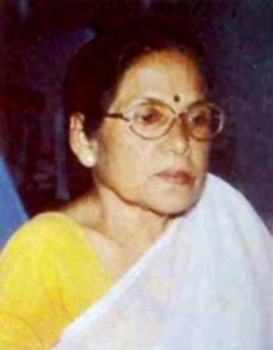 Women novelists in Post Independence Assamese literature have made a significant contribution in the literary arena. Among notable modern novelists we find women writers such as Nirupama Borgohain, Nilima Dutta (1925), and Mamoni Raisom Goswami. Nirupama Borgohain`s first novel, Sei Nadi Niravadhi (1963), is one among many modern novels whose setting is a riverbank. The story of life in the region is told through the life and love of the female protagonist, whose life is inextricably intertwined with the river itself. Another novel centered on a heroine is Dinar Pisot Dinot (1968). Where these novels are female-oriented, Borgohain`s Anya Jivan (1986) and Champavati (1990) can be termed feminist novels. Anya Jivan is probably the first Assamese feminist novel, in that it examines the opposition women face in determining themselves as individuals in a patriarchal society. Though the novel is set in an interior village, its society is but a representation of society at large. As a socially concerned novelist, Nirupama Borgohain does not simply examine feminist issues. Her Iparor Ghor Siparor Ghor (1979) describes the breakdown of rural society due to post-independent economic problems and the further problems that face rural migrants in urban settings. This novel and others, like Dinar Pisot Din and Bhabishyat Ronga Surya (1980), realistically depict social and economic degeneration in free India. Among Borgohain`s better-known works are Antah Shrota (1969), Hridoy Eta Nirjon Dwip (1970), Samanya Asamanya (1971), and Cactus Phool (1976).
Women novelists in Post Independence Assamese literature have made a significant contribution in the literary arena. Among notable modern novelists we find women writers such as Nirupama Borgohain, Nilima Dutta (1925), and Mamoni Raisom Goswami. Nirupama Borgohain`s first novel, Sei Nadi Niravadhi (1963), is one among many modern novels whose setting is a riverbank. The story of life in the region is told through the life and love of the female protagonist, whose life is inextricably intertwined with the river itself. Another novel centered on a heroine is Dinar Pisot Dinot (1968). Where these novels are female-oriented, Borgohain`s Anya Jivan (1986) and Champavati (1990) can be termed feminist novels. Anya Jivan is probably the first Assamese feminist novel, in that it examines the opposition women face in determining themselves as individuals in a patriarchal society. Though the novel is set in an interior village, its society is but a representation of society at large. As a socially concerned novelist, Nirupama Borgohain does not simply examine feminist issues. Her Iparor Ghor Siparor Ghor (1979) describes the breakdown of rural society due to post-independent economic problems and the further problems that face rural migrants in urban settings. This novel and others, like Dinar Pisot Din and Bhabishyat Ronga Surya (1980), realistically depict social and economic degeneration in free India. Among Borgohain`s better-known works are Antah Shrota (1969), Hridoy Eta Nirjon Dwip (1970), Samanya Asamanya (1971), and Cactus Phool (1976).
Nilima Dutta`s novels generally take up ordinary life and realistic concerns. But her latest novel, Dhumuhar Pisot (1992), looks at the student-led political agitation in Assam of the 1980s, the formation of a government by former students, and the effects of the movement in general and is a timely examination of a historical movement that continues to affect Assam today.
Mamoni Raisom Goswami`s novels, too, concern themselves with recent events and often take a socialistic approach. The subject of her novel Sinabor Sot (1972) is the exploitation of its laborers by a bridge construction company. Through this subject, she exposes the inhuman treatment of one class by another, based on socioeconomic differences that have become an acceptable aspect of life in India. Ahiron (1976) and Mamore Dhora Tarowal (1980), too, are similar to this first novel in their empathy for the underclass. In Nilakanthi Braj (1976), Goswami contrasts the abstraction of spiritual beauty with the reality of physical squalor. The young widowed heroine encounters overwhelming poverty and dire need, inhumanity and debased behavior in Mathura, one of the holiest shrines of Hinduism and a place that should have embodied the high ideals of the religion itself. Her Dontal Hatir Uiye Khowa Howda (1988), set in an Assamese satra, or monastery, also exposes religious hypocrisy.
Women writers have therefore contributed immensely to the field of post-independent Assamese literature. Not only are they significant in that they focus on the socially relevant issues, but it is also in these writings that the first stream of feminism can be seen.



















